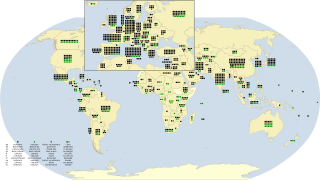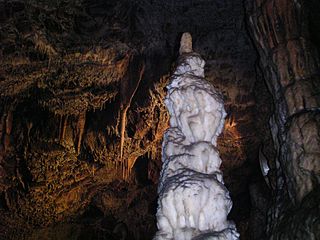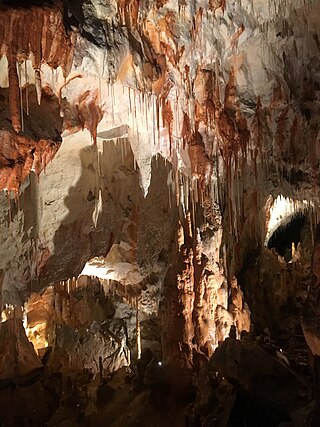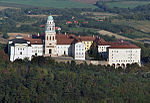
Northern Hungary is a region in Hungary. As a statistical region it includes the counties Borsod-Abaúj-Zemplén, Heves and Nógrád, but in colloquial speech it usually also refers to Szabolcs-Szatmár-Bereg county. The region is in the north-eastern part of Hungary. It borders Slovakia to the north, the Northern Great Plain region of Hungary to the south-east, and the central region of Hungary to the south-west. The region's centre, largest, and capital city is Miskolc.

As of July 2024, there are a total of 1,223 World Heritage Sites located across 168 countries, of which 952 are cultural, 231 are natural, and 40 are mixed properties. The countries have been divided by the World Heritage Committee into five geographical regions: Africa, the Arab States, Asia and the Pacific, Europe and North America, and Latin America and the Caribbean. With 60 selected areas, Italy is the country with the most sites, followed by China with 59, and Germany with 54.

Aggtelek National Park is a national park in Northern Hungary, in the Aggtelek Karst region. The most significant values of the national park are the special surface formations and caves in this limestone landscape.

The North Hungarian Mountains, sometimes also referred to as the Northeast Hungarian Mountains, Northeast Mountains, North Hungarian Highlands, North Hungarian Mid-Mountains or North Hungarian Range, is the northern, mountainous part of Hungary. It forms a geographical unity with the Mátra-Slanec Area, the adjacent parts of Slovakia. It is a separate geomorphological area within the Western Carpathians.

Ochtinská Aragonite Cave is a unique aragonite cave situated in southern Slovakia, near Rožňava. Although only 300 m long, it is famous for its rare aragonite formations. Along with other caves of the Slovak Karst, it is included in the UNESCO World Heritage list as a component of Caves of Aggtelek Karst and Slovak Karst site, because of its diversity of aragonite formations and testimony to the cave-forming geologic processes.

Dobšiná Ice Cave is an ice cave in Slovakia, near the mining town of Dobšiná in the Slovak Paradise. Since 2000 it has been included on the UNESCO World Heritage list as a part of the Caves of Aggtelek Karst and Slovak Karst site, because of its unique cave formations and its natural beauty.

The Domica cave is a karst cave situated on the south-western border of the Silicka planina Plateau 10 km (6.2 mi) south-east of Plesivec in the Rožňava District of the Košice Region in southern Slovakia. In combination with the Baradla cave, it makes up the most significant section of the Aggtelek Karst and Slovak Karst cross-border cave network that continues into the Aggtelek National Park in Hungary. The cave is well-known for its complex structure and high density of speleothems.

Gombasek Cave or Gombasecká jaskyňa and Gombaszögi-barlang is a karst cave in the Slovak Karst, Slovakia. It is named after the settlement of Gombasek, which belongs to the village of Slavec. It is located in the Slovak Karst National Park, in the Slaná river valley, approximately 15 km south of Rožňava. The cave was discovered on 21 November 1951 by volunteer cavers. In 1955, 285 m out of 1 525 m were opened to the public. Currently, the route for visitors is 530 m long and takes about 30 minutes.

Aggtelek is a village in the county of Borsod-Abaúj-Zemplén, Hungary. It is known for the vast stalactite caverns of the nearby Baradla-Domica cave system, part of the UNESCO World Heritage Site of Aggtelek and Slovak Karst.

The Caves of Aggtelek Karst and Slovak Karst are a series of over 1000 karst caves spread out over a total area of 55,800 ha along the border of Hungary and Slovakia. With an exceptional diversity of karst structures and complex cave systems developing from both temperate and tropical processes, the caves and surrounding areas were inscribed as a UNESCO World Heritage Site in 1995.

The Baradla Domica cave system is a large cave system in northern Hungary. As part of the Aggtelek Karst, it extends more than 25.5 km (25,500 m) and includes the 5.3 km (3.3 mi) Domica cave. A significant part of the cave has varied colors and shapes providing an unparalleled spectacle of decorative stalactites.





























